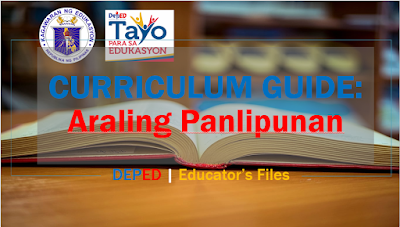K-12 Curriculum Guide - English
PHILOSOPHY and RATIONALE
Language is the basis of all communication and the primary instrument of thought. Thinking, learning, and language are interrelated. Language is governed by rules and systems (language conventions) which are used to explore and communicate meaning. It defines culture which is essential in understanding oneself (personal identity), forming interpersonal relationships (socialization), extending experiences, reflecting on thought and action, and contributing to a better society. Language, therefore, is central to the peoples’ intellectual, social and emotional development and has an essential role in all key learning areas.
.
Language is the foundation of all human relationships. All human relationships are established on the ability of people to communicate effectively with each other. Our thoughts, values and understandings are developed and expressed through language. This process allows students to understand better the world in which they live and contributes to the development of their personal perspectives of the global community. People use language to make sense of and bring order to their world. Therefore, proficiency in the language enables people to access, process and keep abreast of information, to engage with the wider and more diverse communities, and to learn about the role of language in their own lives, and in their own and other cultures.
.
Language is the foundation of all human relationships. All human relationships are established on the ability of people to communicate effectively with each other. Our thoughts, values and understandings are developed and expressed through language. This process allows students to understand better the world in which they live and contributes to the development of their personal perspectives of the global community. People use language to make sense of and bring order to their world. Therefore, proficiency in the language enables people to access, process and keep abreast of information, to engage with the wider and more diverse communities, and to learn about the role of language in their own lives, and in their own and other cultures.
GUIDING PRINCIPLES
The K-12 Language Arts and Multiliteracies Curriculum is anchored on the following language acquisition, learning, teaching and assessing principles. All languages are interrelated and interdependent. Facility in the first language (L1) strengthens and supports the learning of other languages (L2). Acquisition of sets of skills and implicit metalinguistic knowledge in one language (common underlying proficiency or CUP) provides the base for the development of both the first language (L1) and the second language (L2)2. It follows that any expansion of CUP that takes place in one language will have a beneficial effect on the other language(s). This principle serves to explain why it becomes easier and easier to learn additional languages.
Language acquisition and learning is an active process that begins at birth and continues throughout life. It is continuous and recursive throughout students’ lives. Students enhance their language abilities by using what they know in new and more complex contexts and with increasing sophistication (spiral progression). They reflect on and use prior knowledge to extend and enhance their language and understanding. By learning and incorporating new language structures into their repertoire and using them in a variety of contexts, students develop language fluency and proficiency. Positive learning experiences in language-rich environments enable students to leave school with a desire to continue to extend their knowledge, skills and interests.
Language acquisition and learning is an active process that begins at birth and continues throughout life. It is continuous and recursive throughout students’ lives. Students enhance their language abilities by using what they know in new and more complex contexts and with increasing sophistication (spiral progression). They reflect on and use prior knowledge to extend and enhance their language and understanding. By learning and incorporating new language structures into their repertoire and using them in a variety of contexts, students develop language fluency and proficiency. Positive learning experiences in language-rich environments enable students to leave school with a desire to continue to extend their knowledge, skills and interests.
Educators' Files does not own this Curriculum Guide (English). DepEd owns this and has certainly the right over its copyright law.



